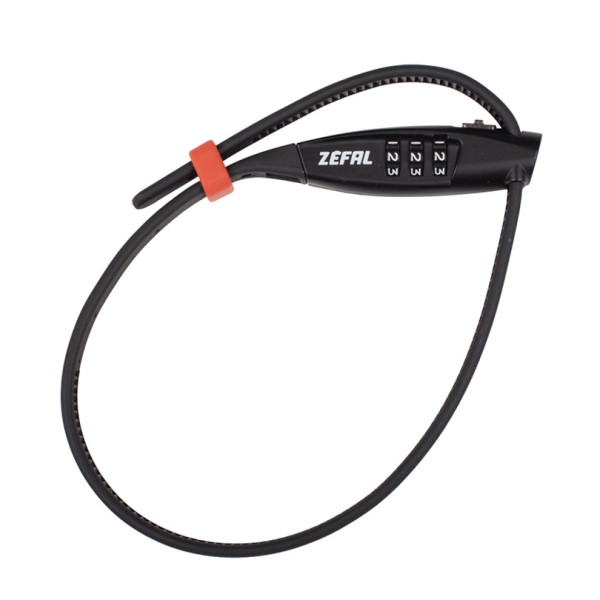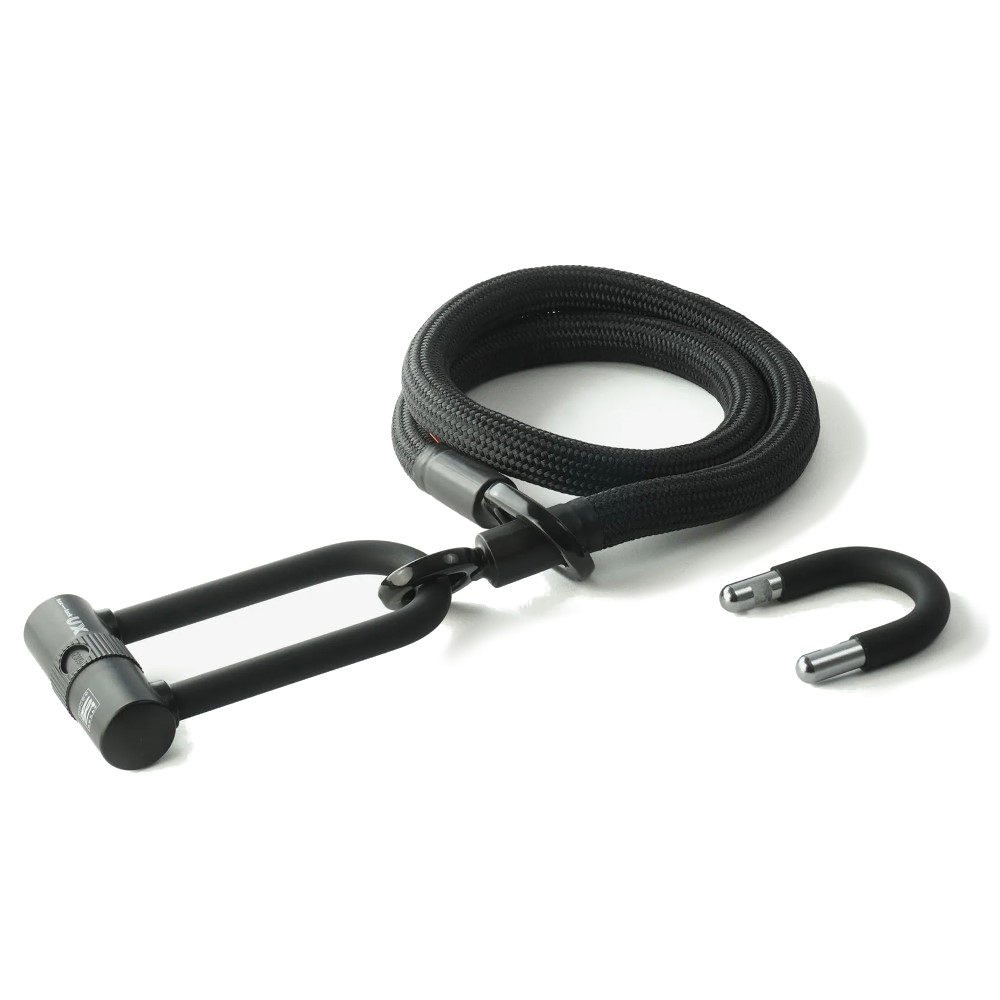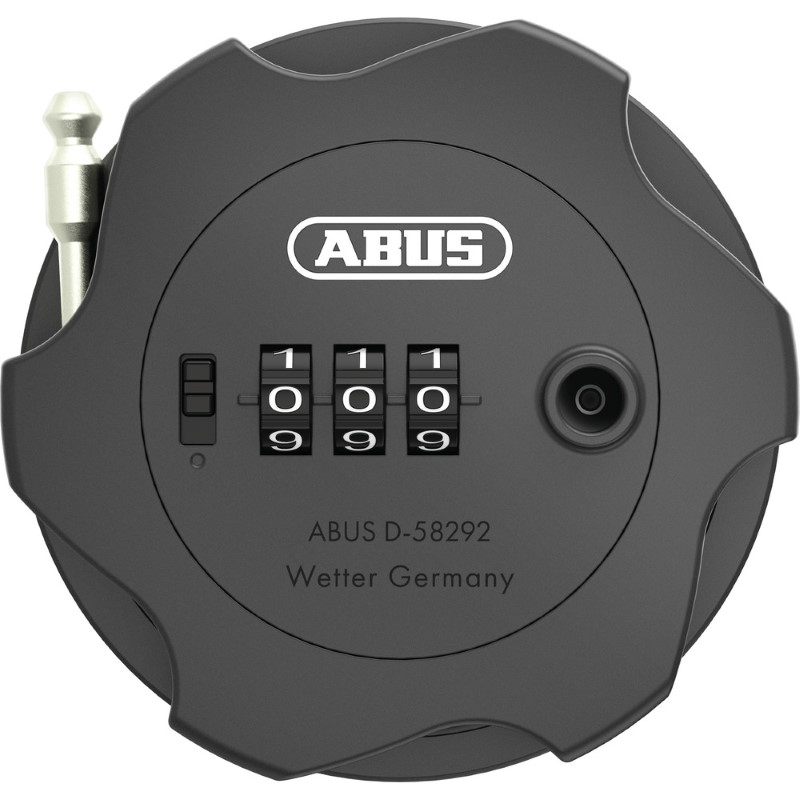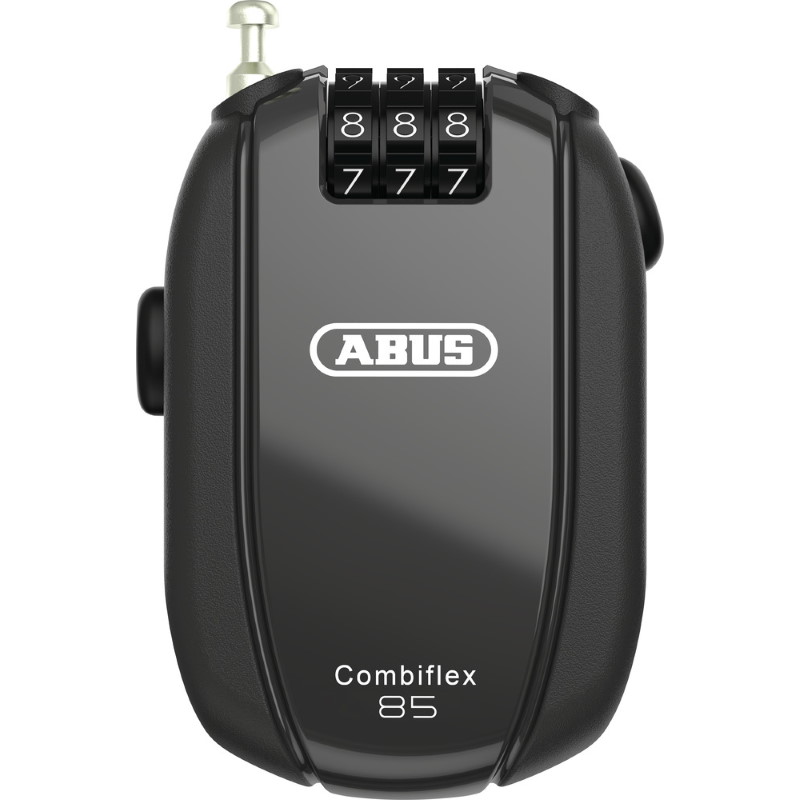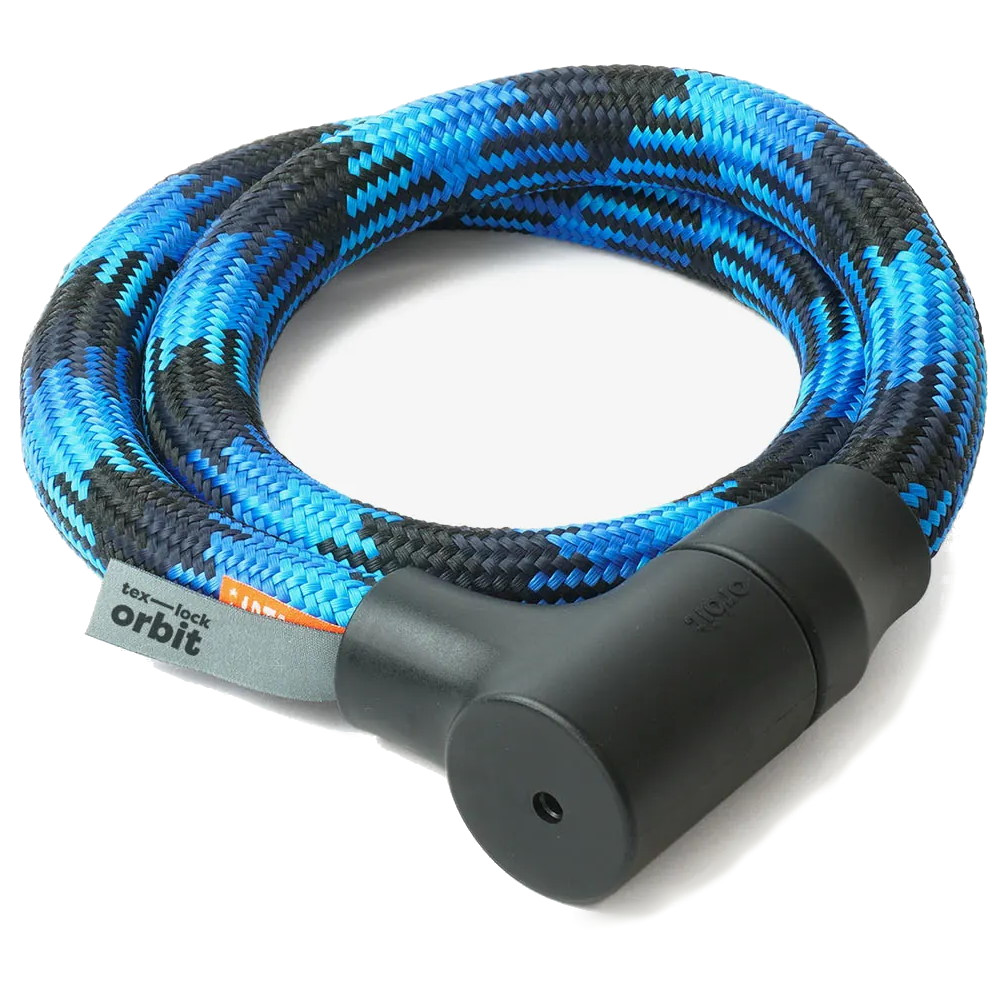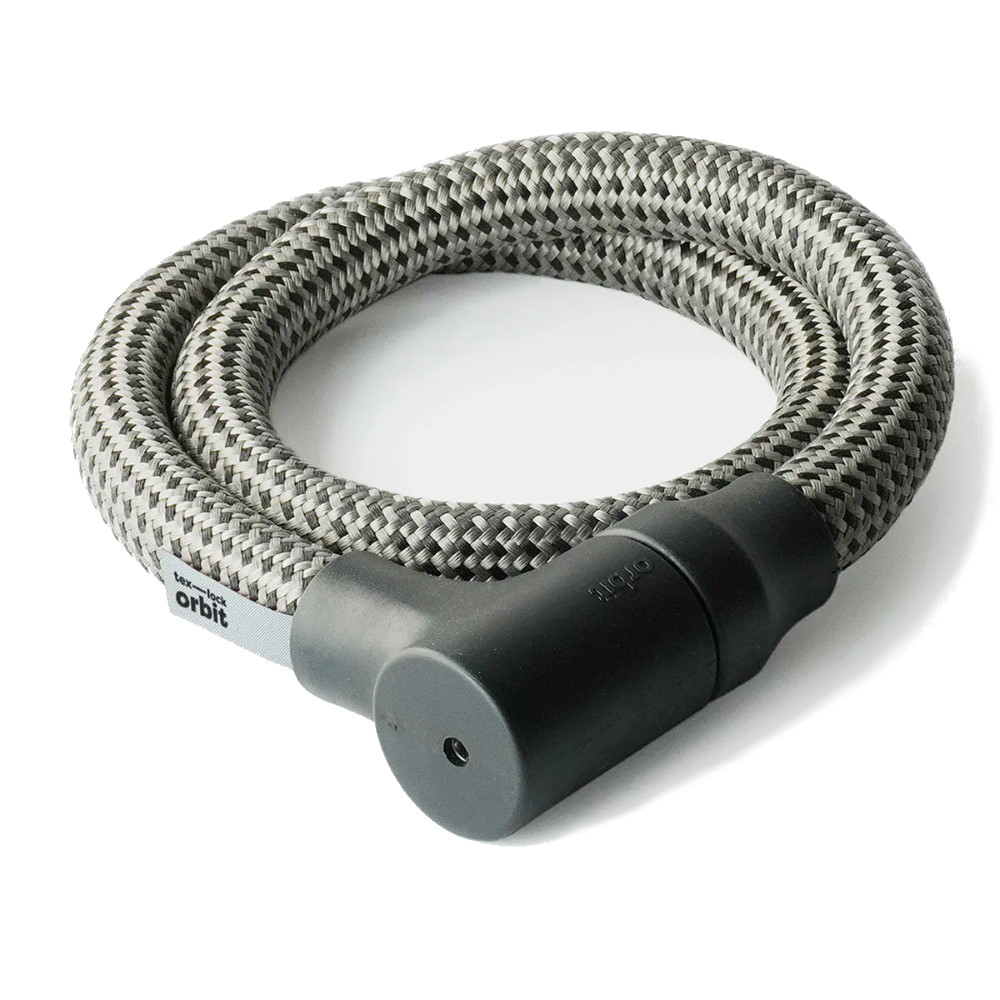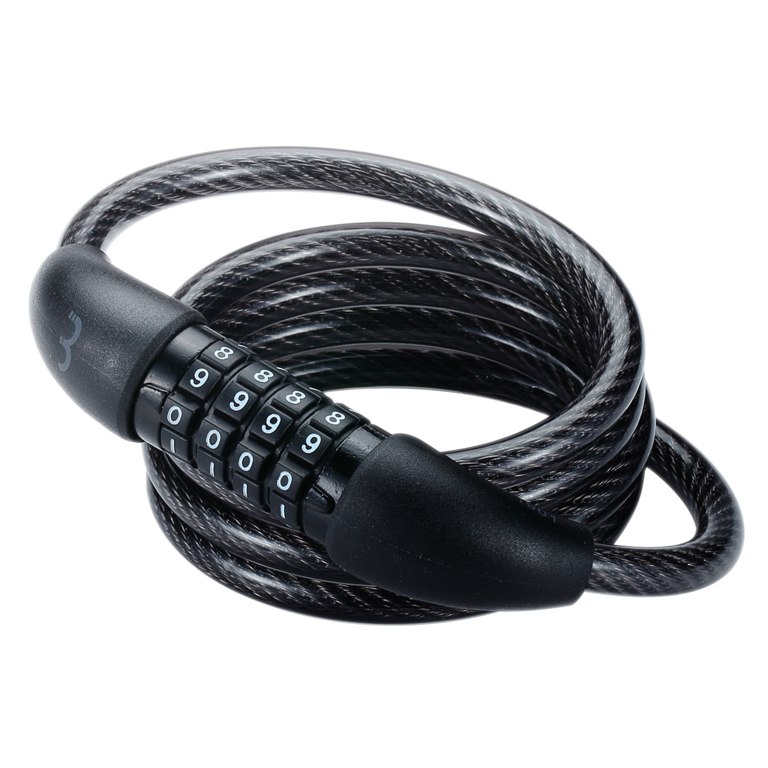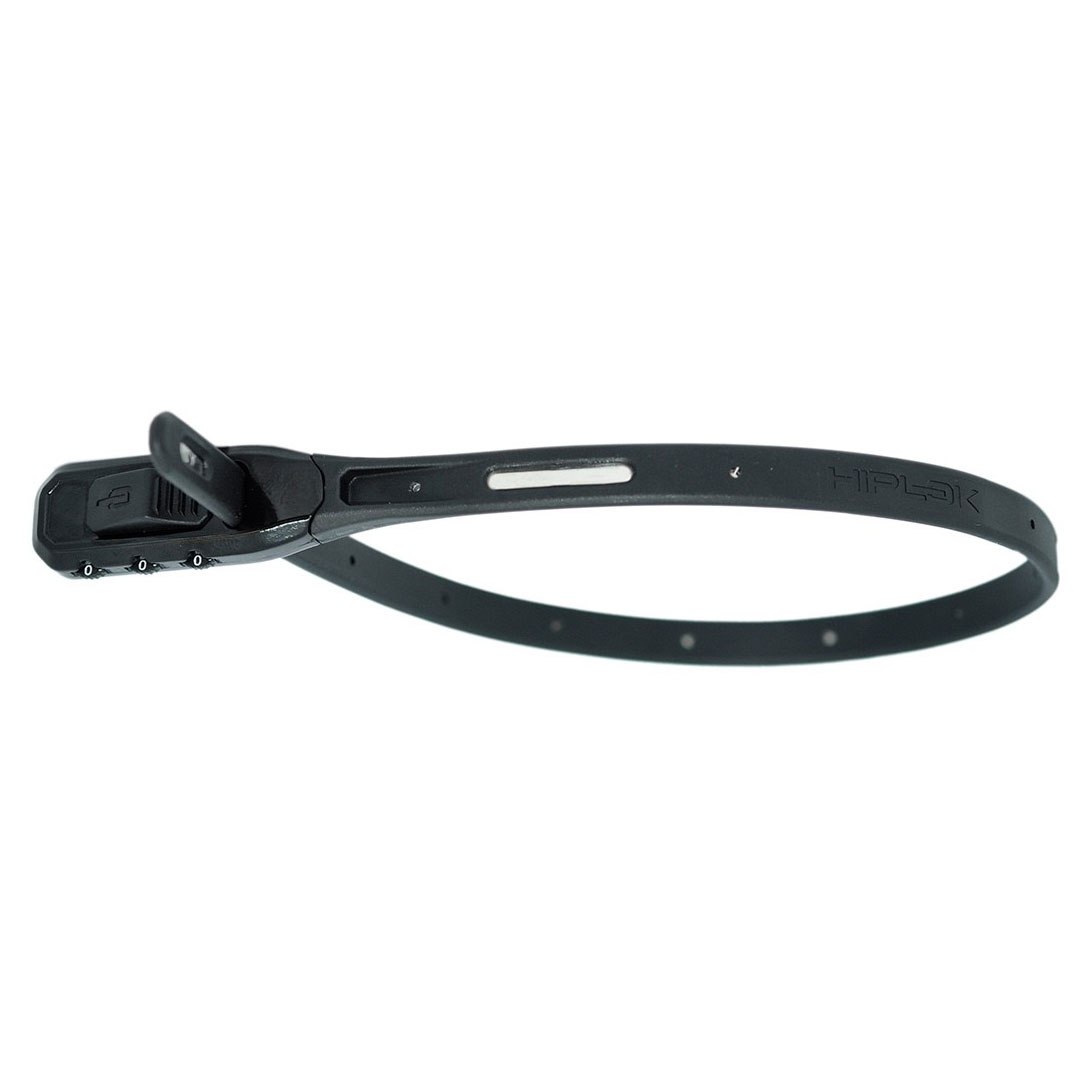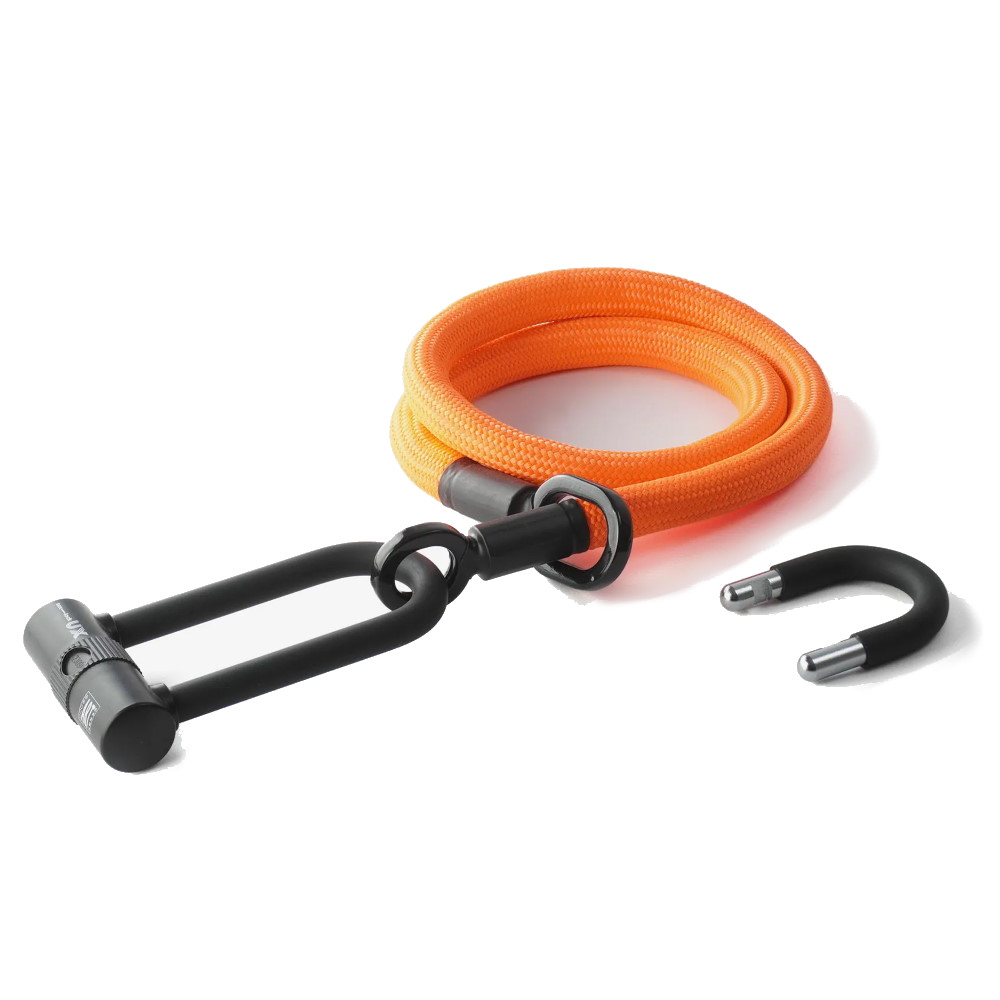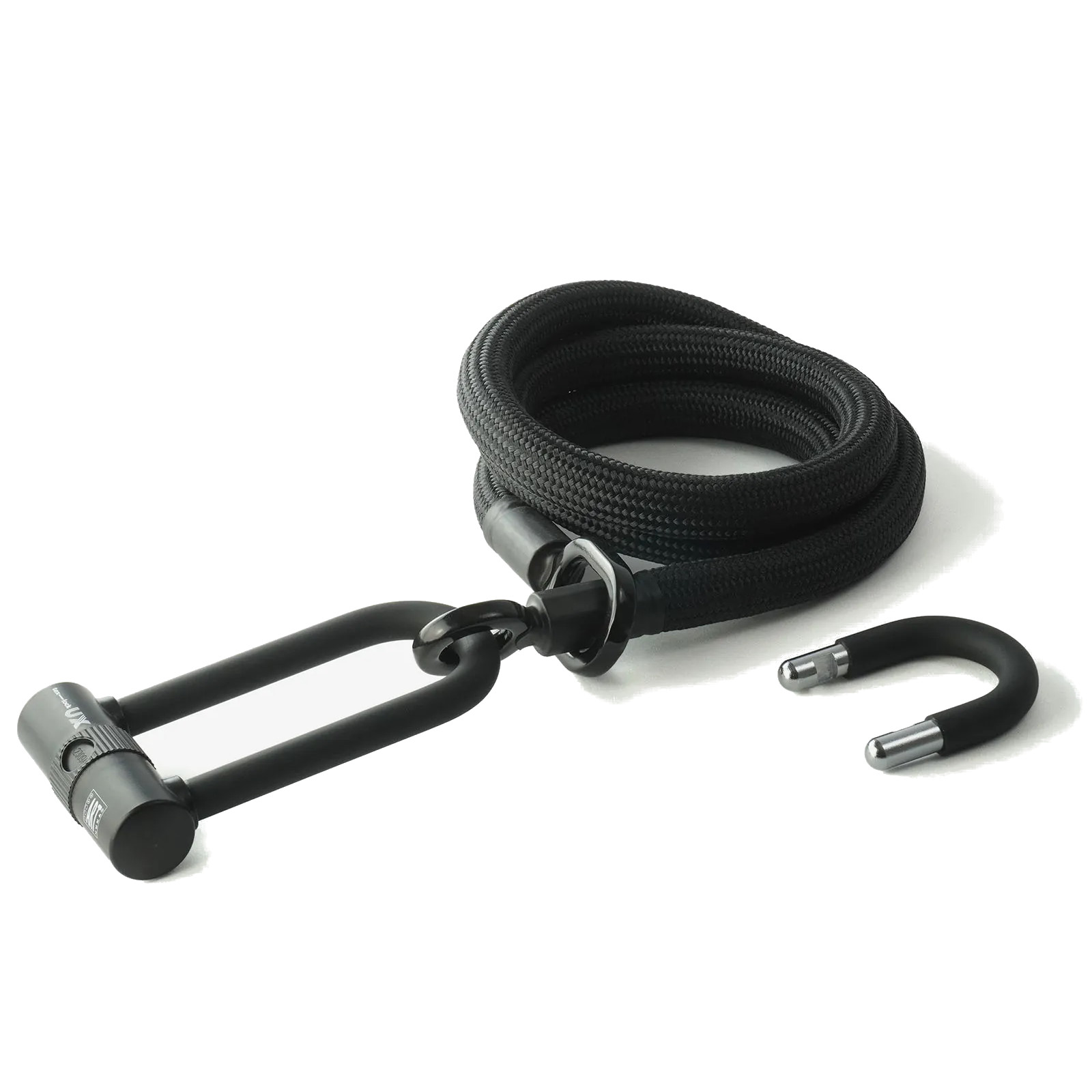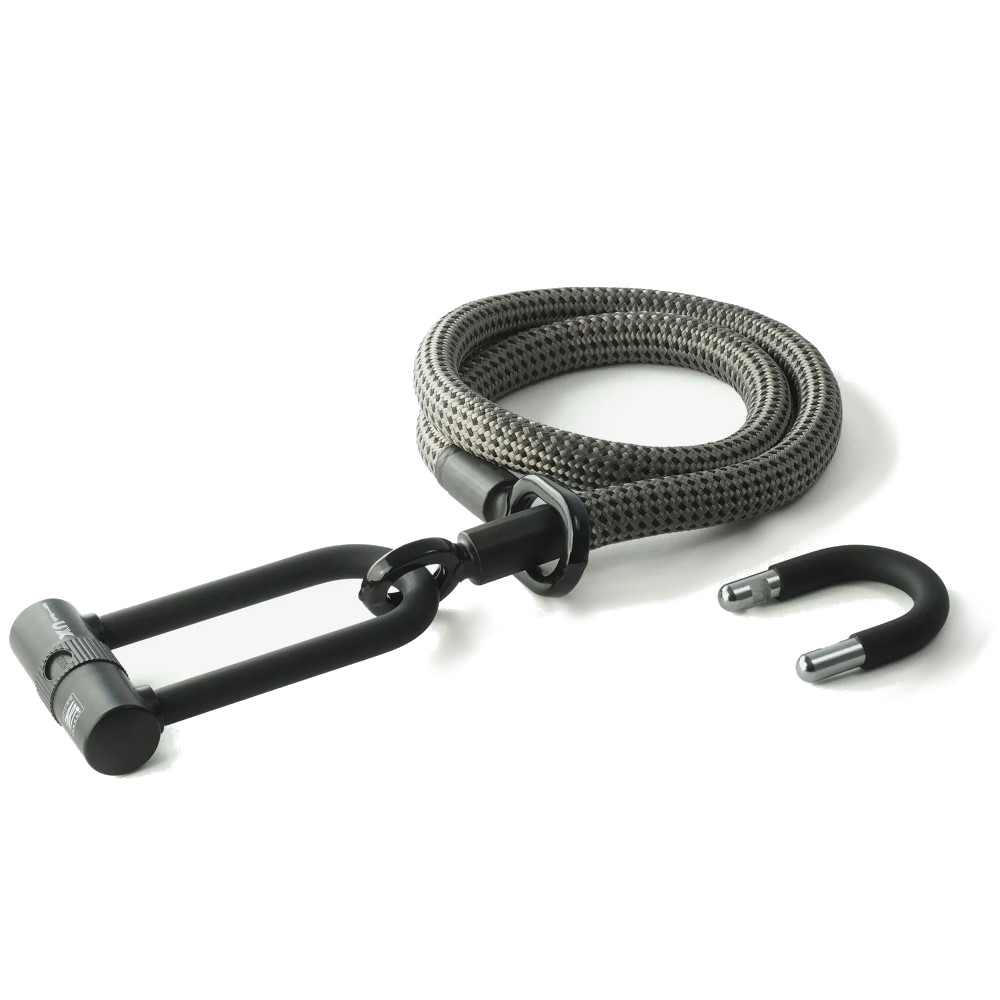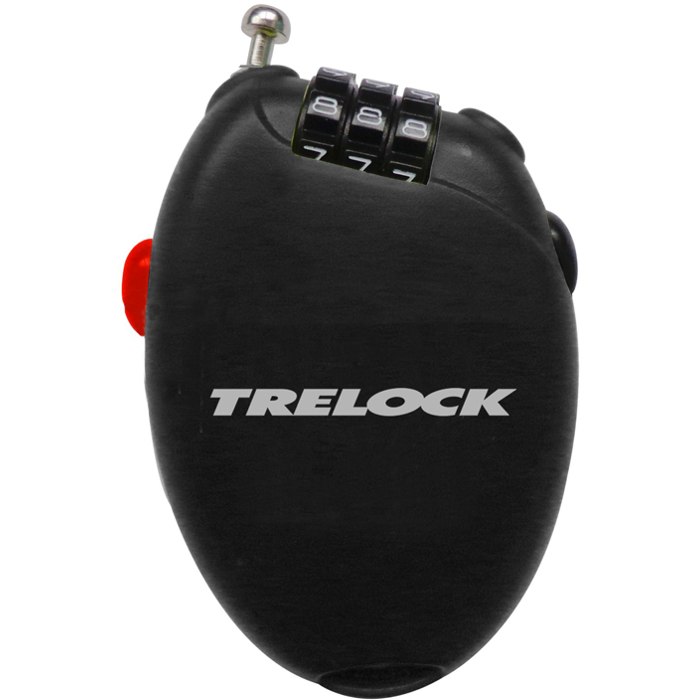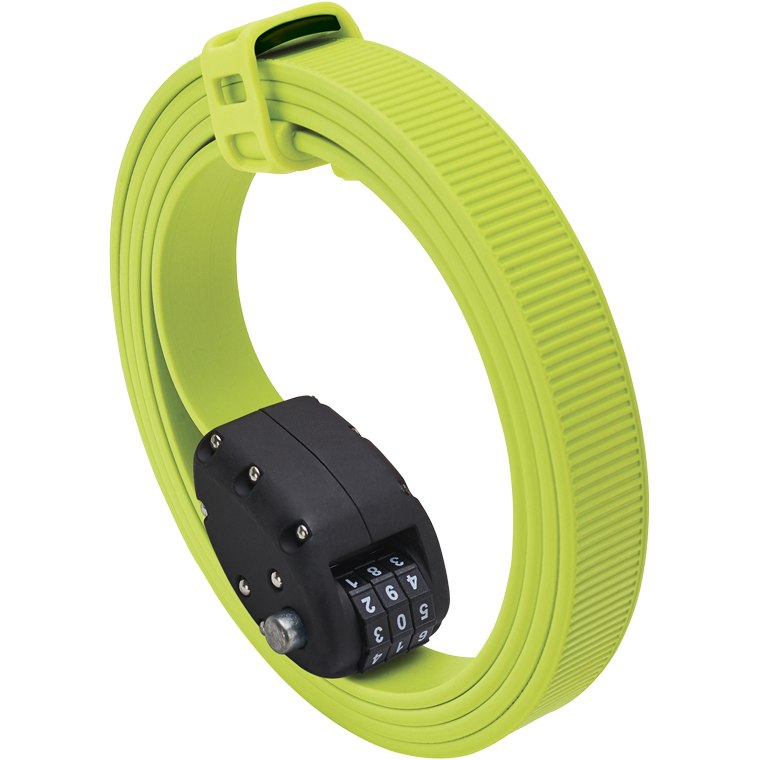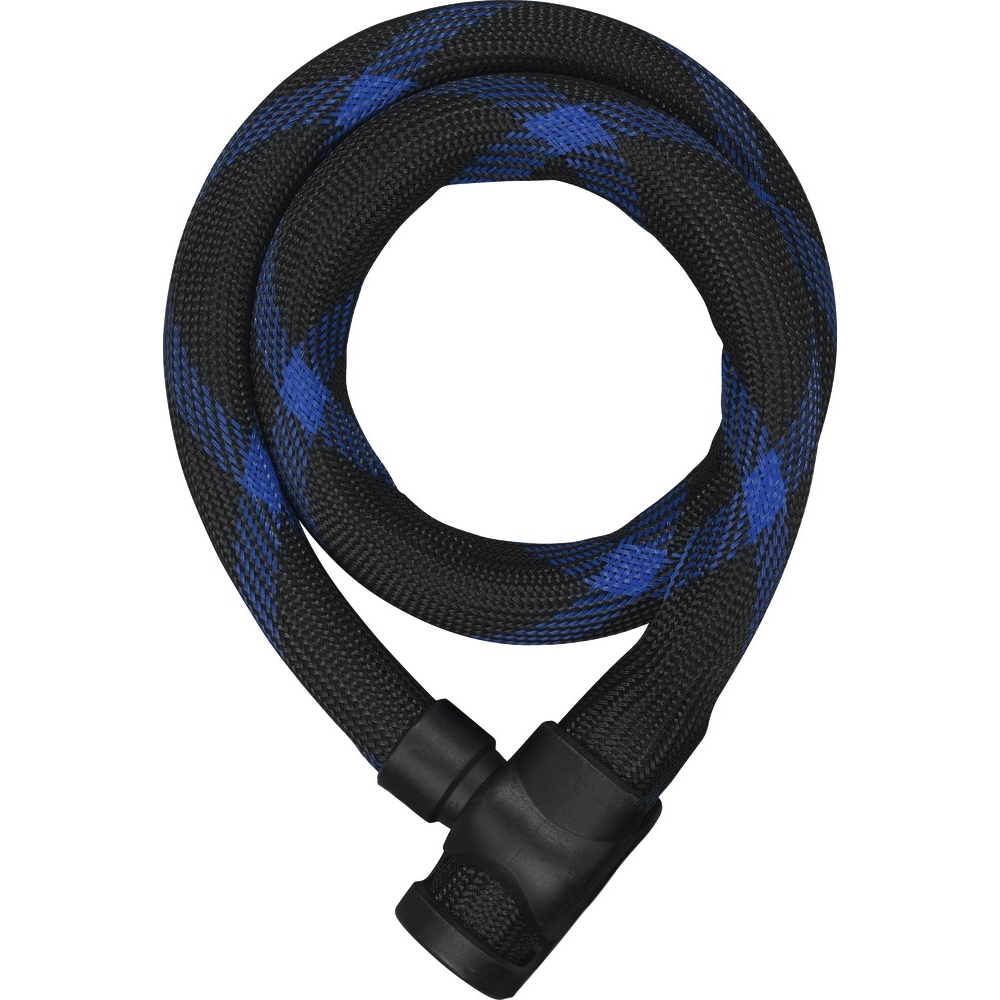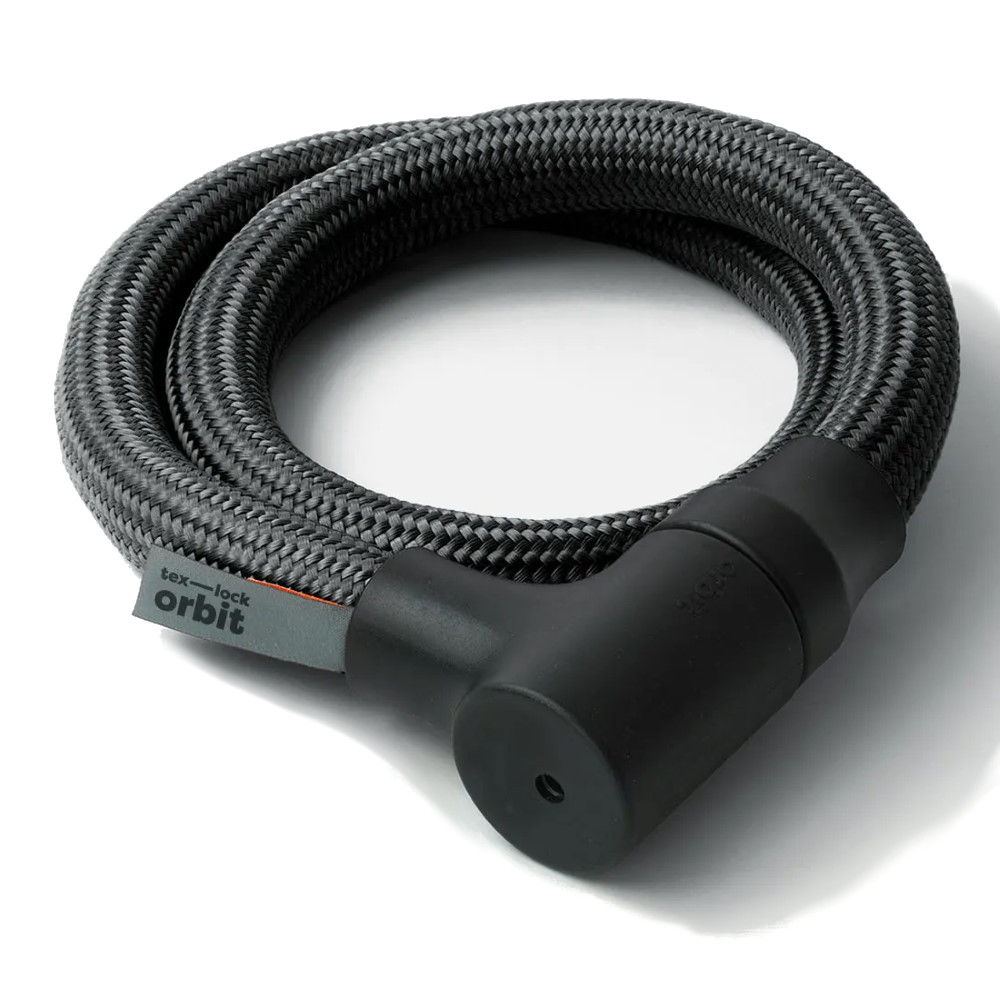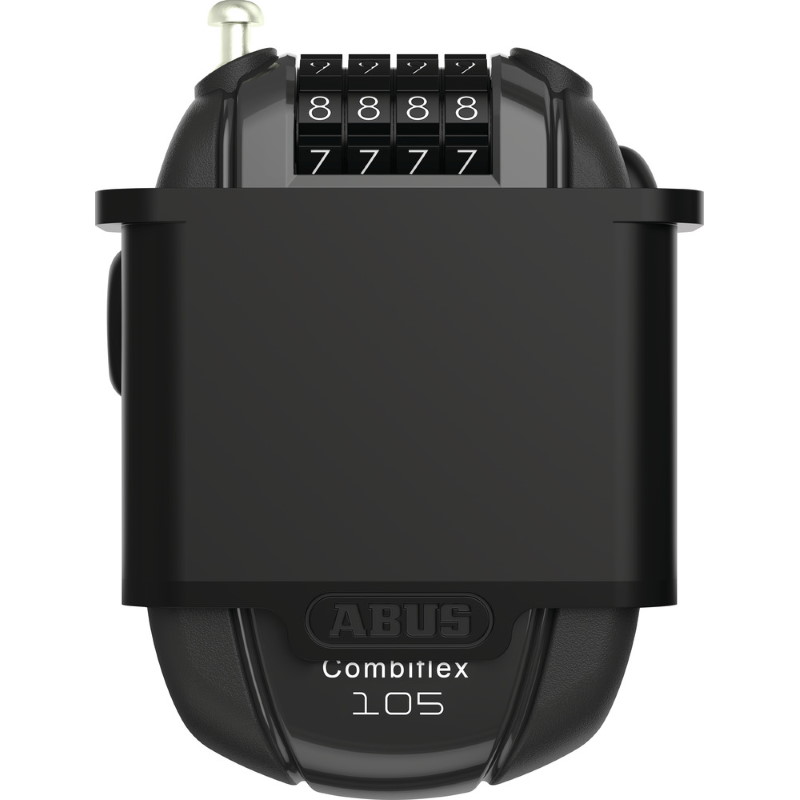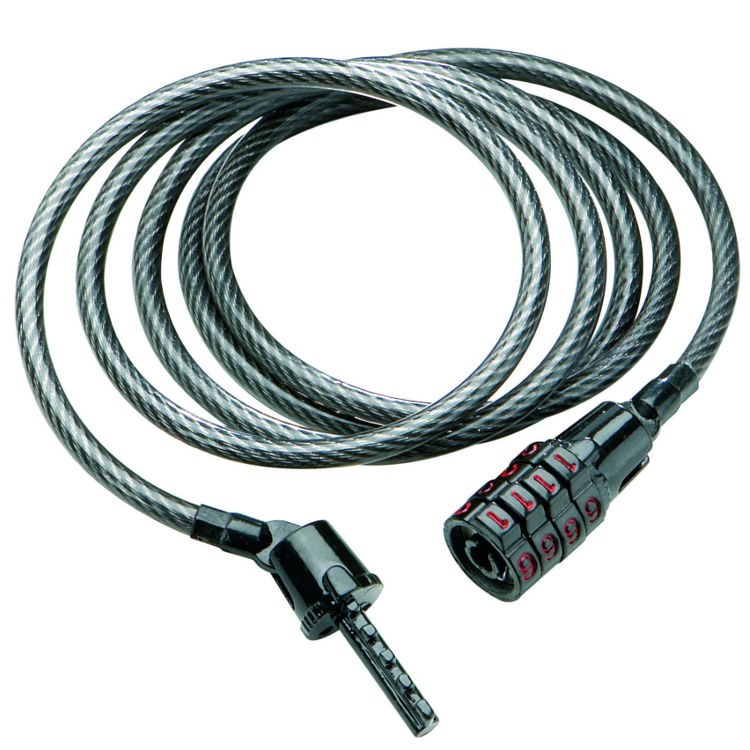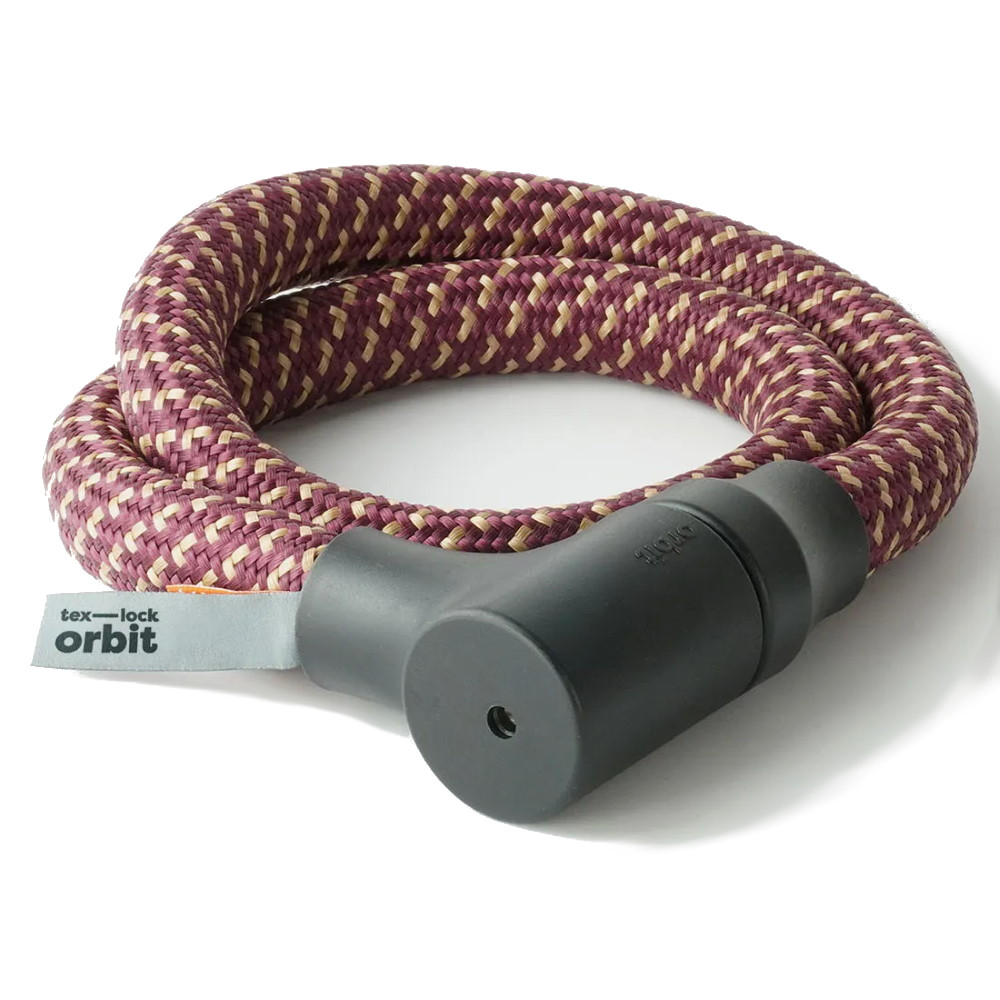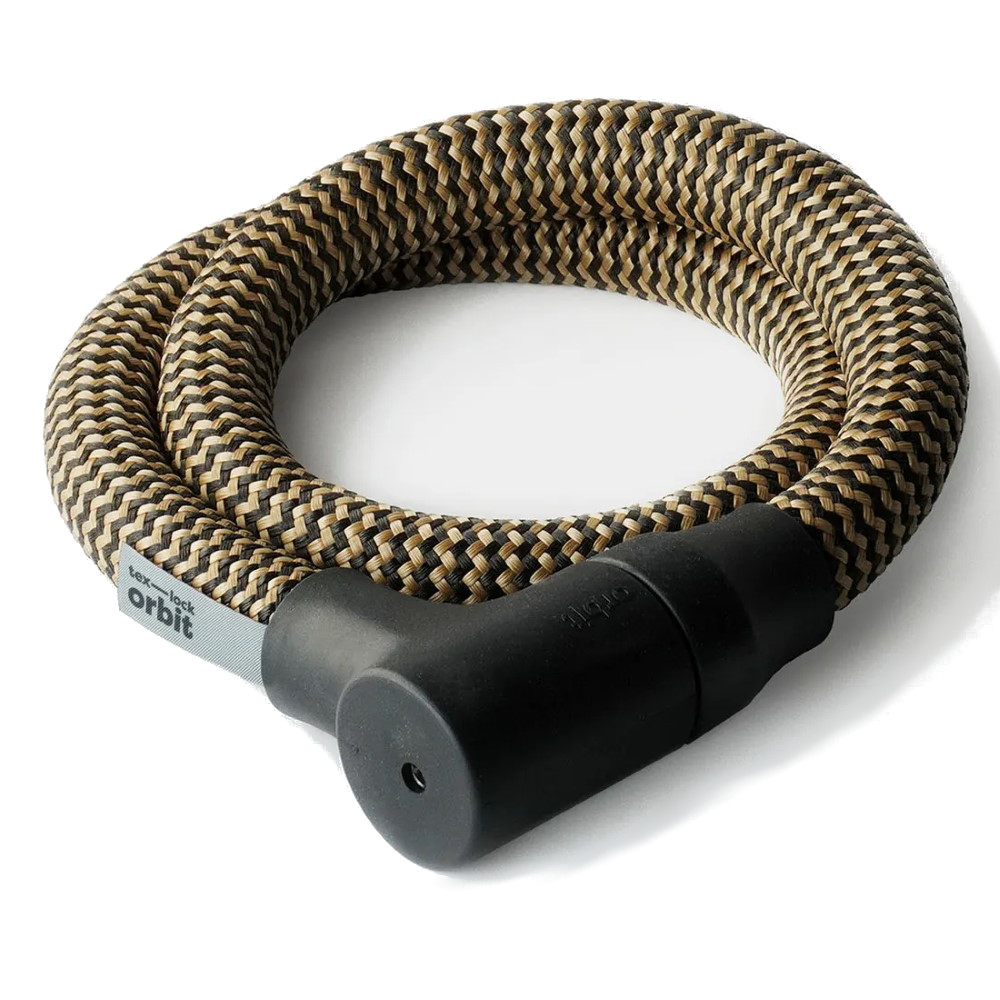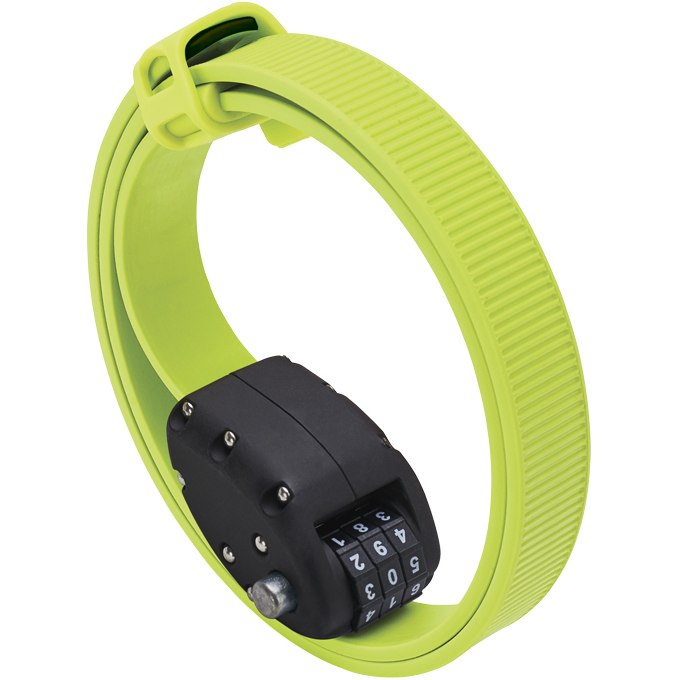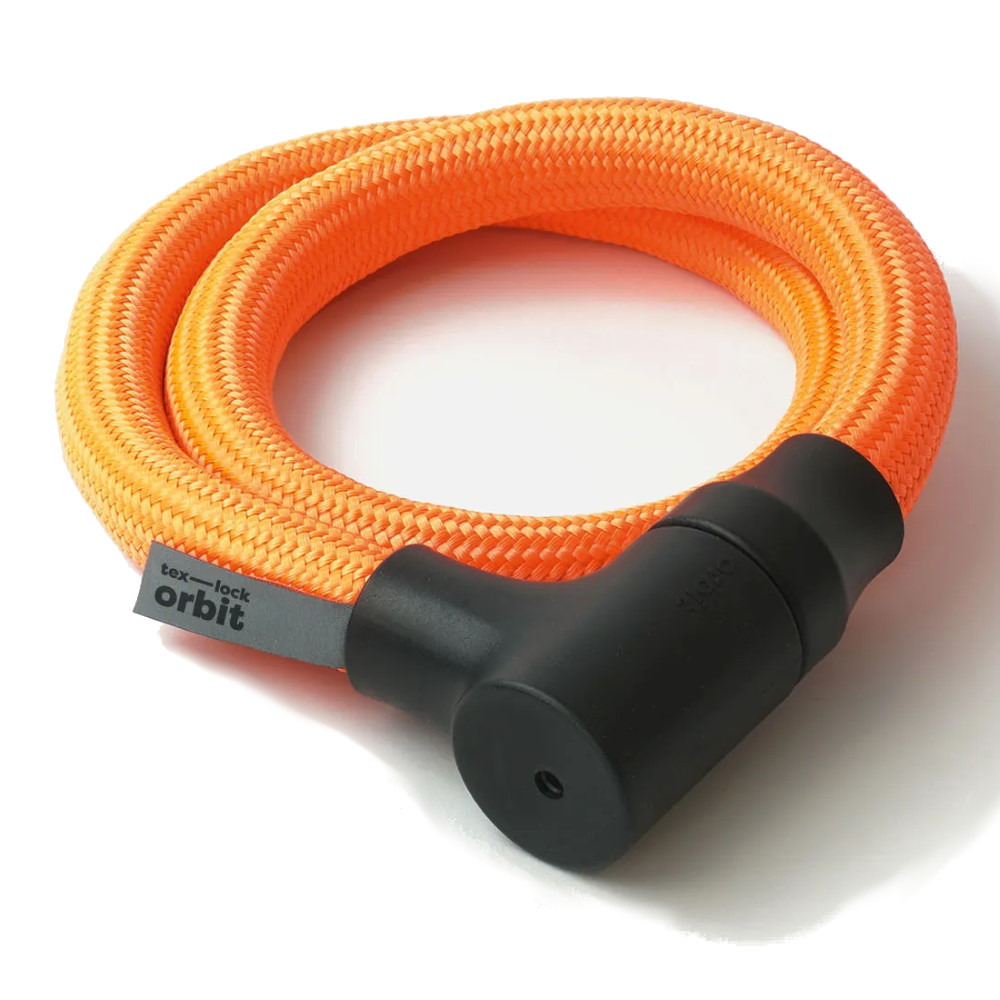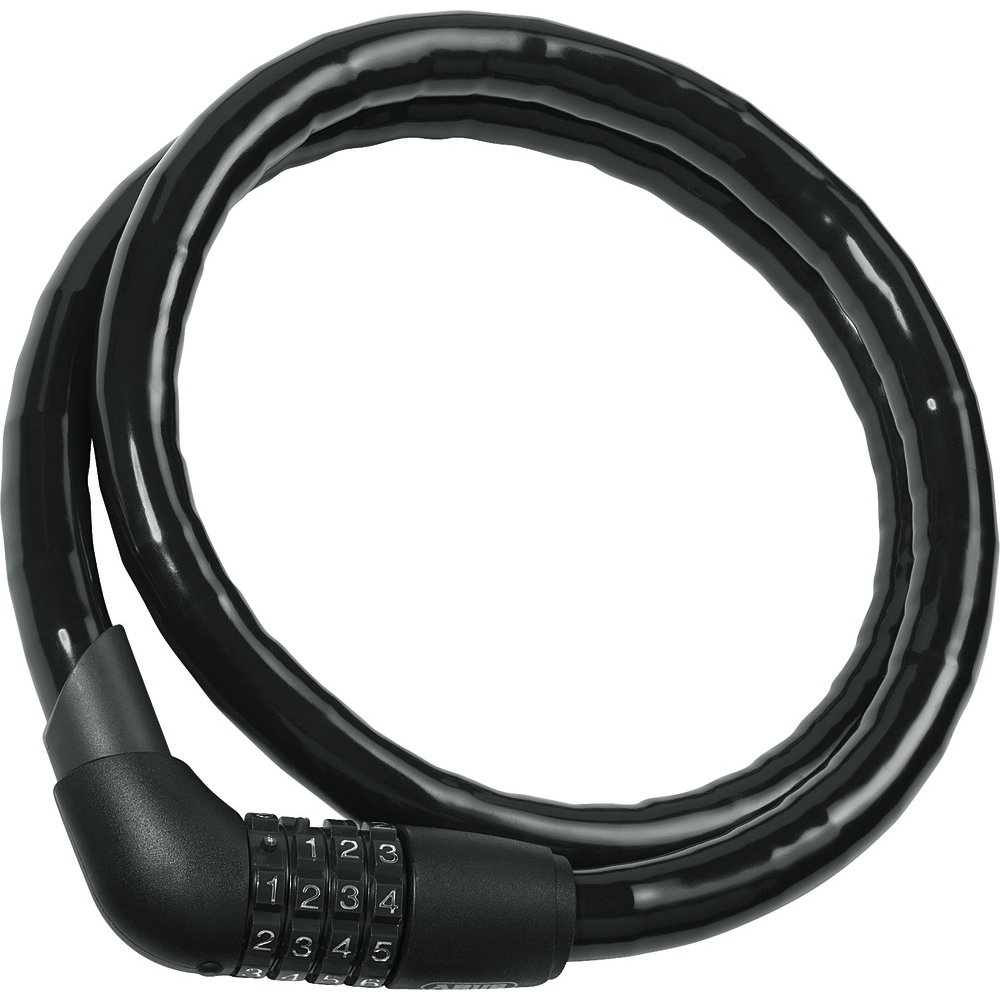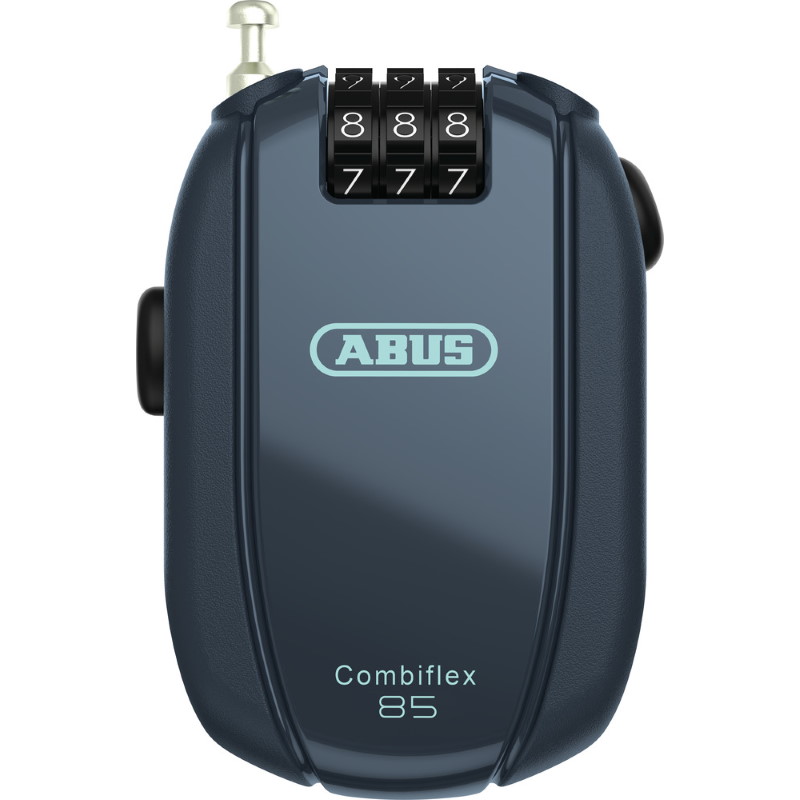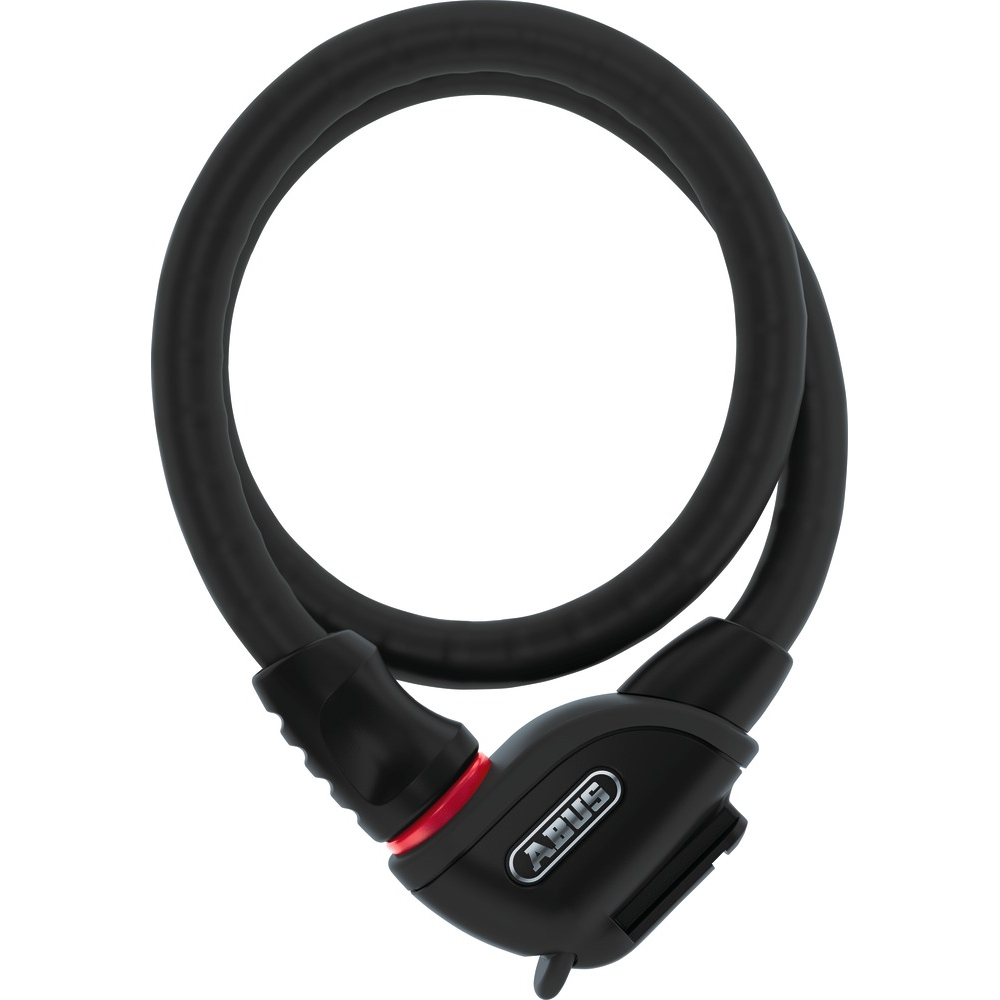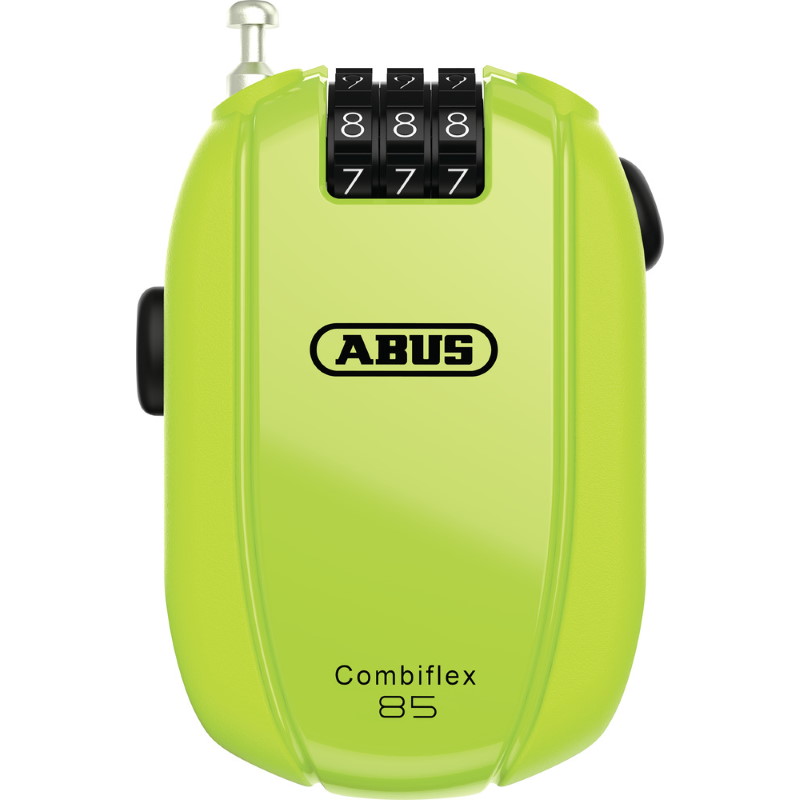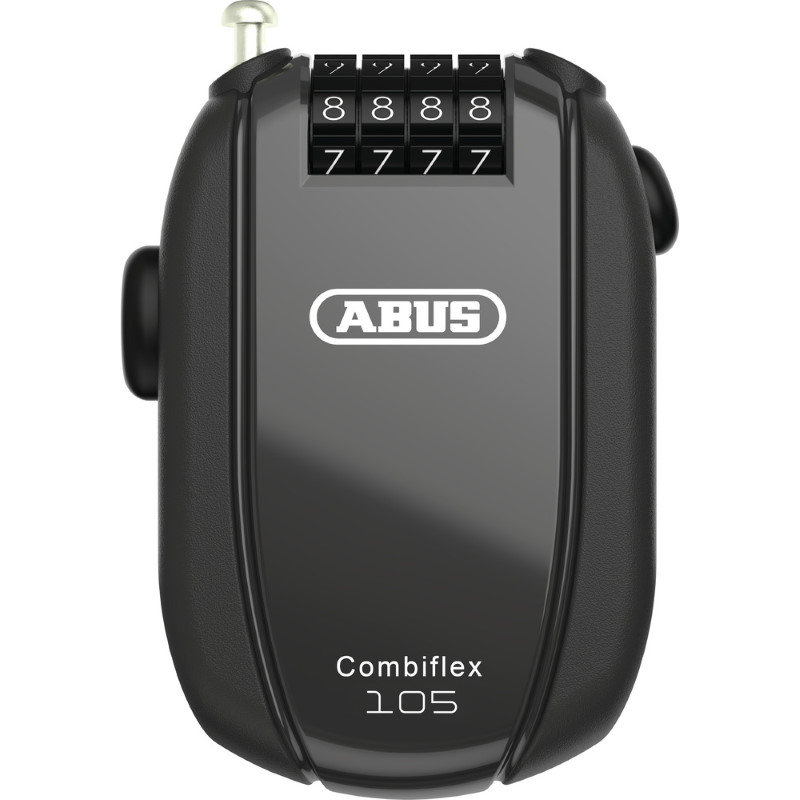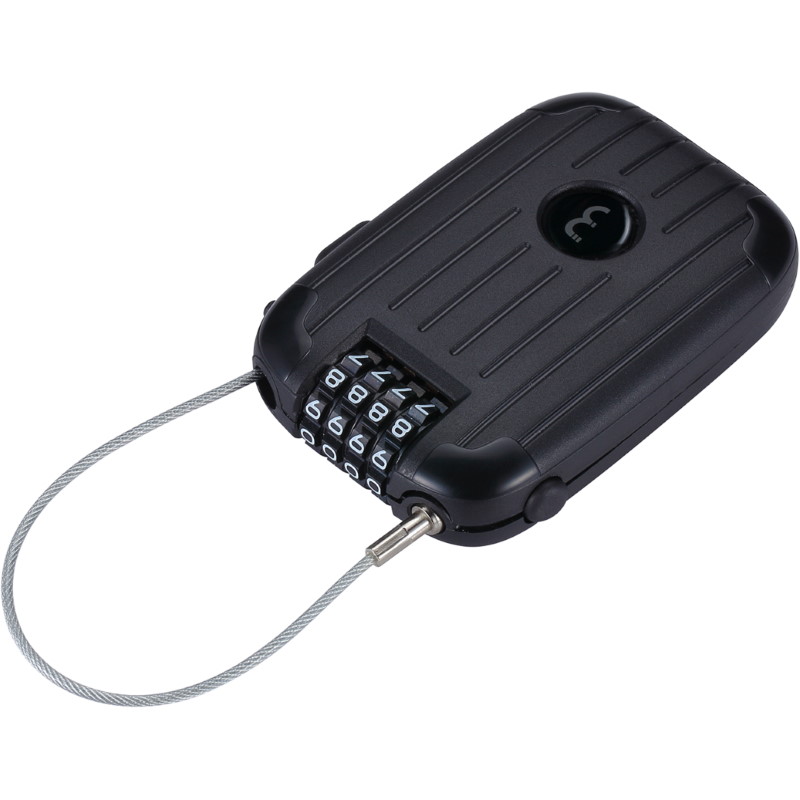- Home
- Cycling
- Bike Accessories
- Bike Locks
- Cable Locks
Cable Locks – The Handy Way to Secure Your Bike
Low weight and a high degree of flexibility – these properties are why many cyclists prefer to lock up their bike with a cable lock. On this page we explain the advantages and disadvantages of cable locks. You can also learn here what to consider when buying your new cable lock. Read more
Bicycle Cable Locks – What Is a Cable Lock and How Does It Work?
The name says it all – and this saying is perhaps more apt for cable locks than any other bike lock. This lock is in fact a metal cable, (usually) sheathed in plastic and equipped with an integrated lock. The sheathing protects the metal core from corrosion. At the same time, it protects the bike from being scratched by the cable lock’s steel interior. Its special construction makes the cable lock particularly light. It is also very flexible when it comes to potential uses. When coiled up, the lock takes up very little space and in many cases can even be easily attached to the frame while riding. It is therefore no coincidence that cable locks are the ideal solution for many cyclists looking for a flexible bike lock to take out with them.
Bicycle Cable Locks – What Types of Cable Locks Are There?
A wide variety of cable locks are available. Some have a rather shorter and thinner cable and are designed to be particularly lightweight. Others are built much more robustly to achieve the highest possible level of security. Besides the metal cable’s thickness, the various models also differ in their locking mechanism. Most cable locks are equipped with a classic lock and key. However, there are also numerous models on the market with a combination lock. Bicycle cable locks with this kind of locking mechanism are usually somewhat more expensive than their classic counterparts. On the other hand, they are often much more convenient to use and the cable lock is usually much quicker to put on and take off. At BIKE24 you will find a large selection of cable locks – and so locks with both locking mechanisms.
How Secure Are Cable Locks?
The security of a cable lock depends on the model. In principle, however, you should consider a cable lock as basic protection. A cable lock cannot offer the same level of security as a solid D-lock. The fact that many cyclists still reach for their cable lock – also often called a spiral lock – is due to its handiness and low weight. We therefore really recommend the cable lock to anyone looking for a lightweight lock for their daily bike runarounds. However, if you lock your bike outside overnight in a busy area, you should opt for a more solid locking solution.
The Advantages of Cable Locks at a Glance
Cable locks are very light and compact.
Cable locks offer a high degree of flexibility in how and where they can be fastened.
Cable locks can be easily attached to the bike and carried on the frame while riding.
Cable locks are available in a wide range of variants, colours and security levels.
Cable locks are often in a more attractive price range than more solid locking solutions.
The Disadvantages of Cable Locks at a Glance
Cable locks are not as sturdy as other locking methods and are therefore only suitable for everyday use.
Cable locks (depending on the model) can be easier to pick than more solid locks.
It is best to combine it with another type of bicycle lock when locking your bike up at night.
